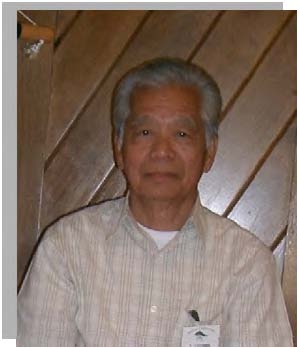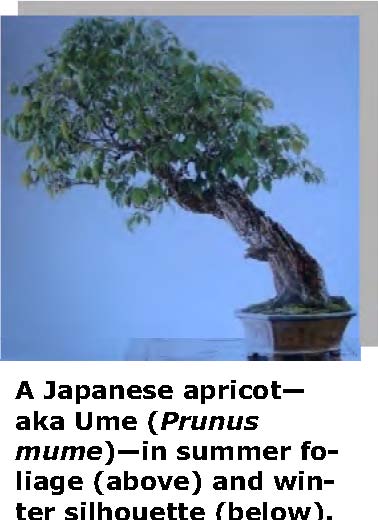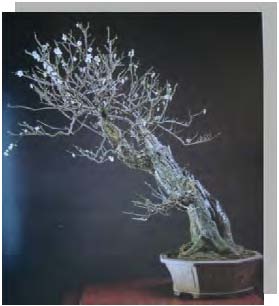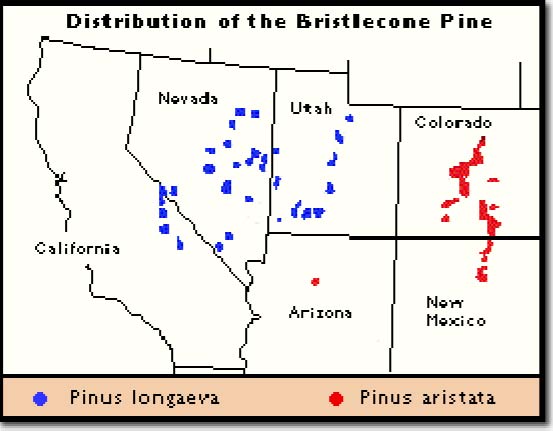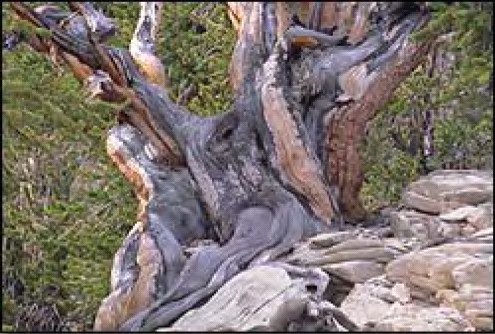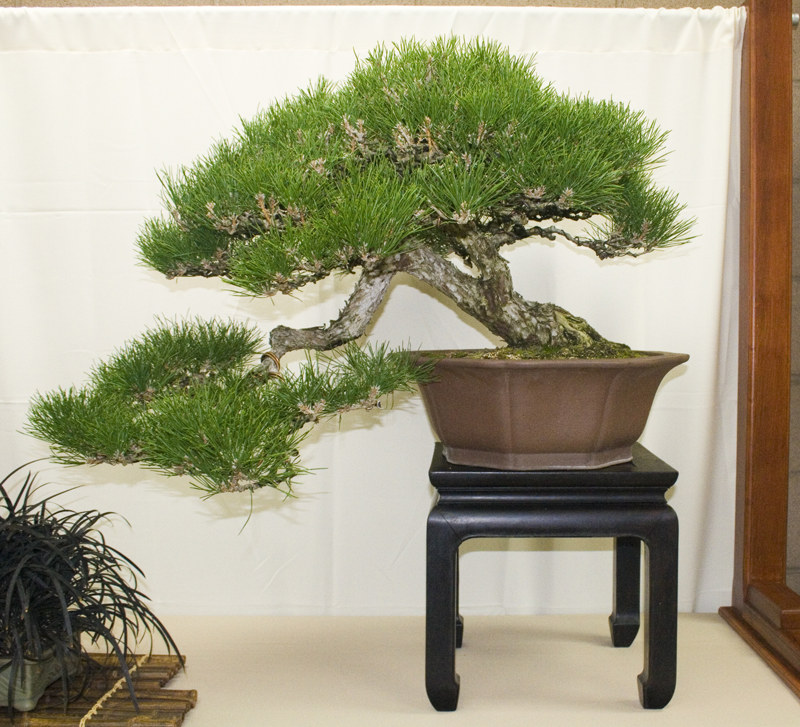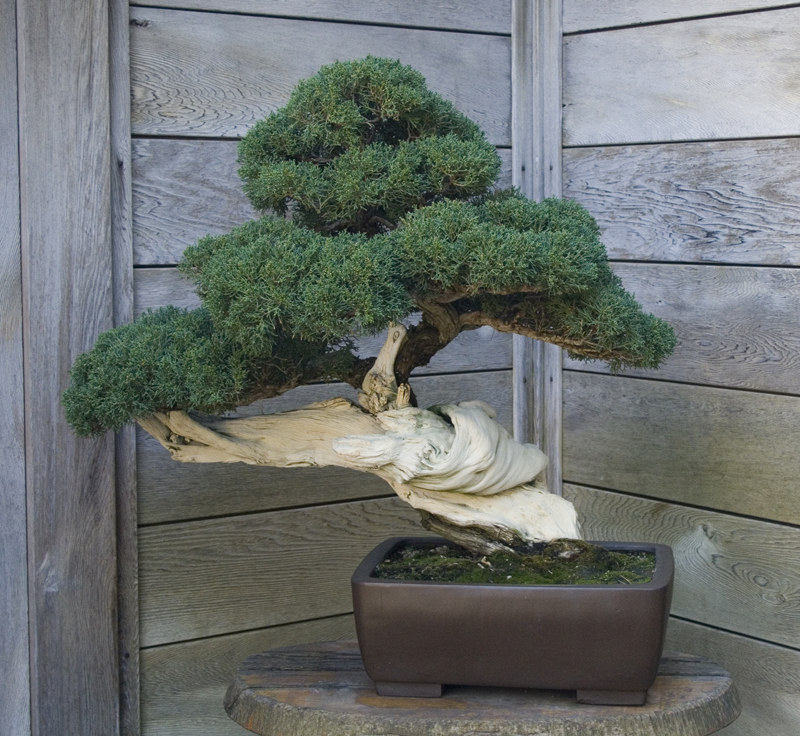May 2008 Newsletter
President’s Message
Showing Up To Get Hooked on Bonsai
By Ken Fuentes
This has been a very rewarding month for the Conejo Valley Bonsai Society. Many members are bringing in their trees with incredible results. There is an old saying that “Showing Up” gets you 80% of the way and many of our members now are well on their way.
|
Which brings me to a new program proposed by Ted Matson, president of the Golden State Bonsai Federation, called “The Power of One.” He is asking each member club (such as our own CVBS) to purchase one convention registration and get it to a member who might not normally attend a GSBF convention. Each club would decide how to pick the lucky member, whether through raffle, auction, gift, or reward for some activity.
There is no question that attending a convention will light a fire under any person interested in bonsai. The combination of participating in the club workshops, attending conventions, and taking bonsai classes is beneficial. I recommend that we accept Ted’s challenge and fund one full registration to this year’s GSBF Convention XXXI October 30 – November 2 in Modesto.
For more details, see the GSBF’s bimonthly magazine, Golden Statements, May / June 2008. If you aren’t yet a subscriber, you can find the current issue on GSBF’s Web site at www.gsbf-bonsai.org – click on “Golden Statements Online” and follow the instructions. “The Power of One” is on page 4.
If your interest is becoming more proficient in bonsai techniques, remember, do what you can to show up. Prepare as if it were a business meeting. Take some time to plan what you might be able to accomplish at the next meeting. Decide on the plant material, tools, pots, soil, and wire that will be needed in advance. Plan to show up prepared.
I look forward to seeing each and every member at the next meeting.
Common Science
What’s in a Name … or Two?
By David E. Whiteside
There is a great deal of confusion about plant names in general and bonsai specimens in particular. While many (most?) bonsai collectors manage to muddle through never knowing precisely what species of trees or shrubs they own, it can be very useful to know exactly what we have in order to tailor each bonsai’s care to its natural needs. But while this is easy to say, it usually is quite difficult to do.
The first obstacle is that common names for most plants are notoriously unreliable. That’s partly because virtually anyone but especially any commercial nursery or plant propagator-can make up a name for any plant, unless the plant is protected by a patent or its name by a trademark (but that’s another story).
It’s also common for the same species to have different names, especially in various countries. Consider, for example, the European white waterlily (Nymphaea alba): Michael A. Dirr, horticulturist and expert on woody plants, points out that it has 15 common names in English, 44 in French, 105 in German, and 81 in Dutch, for a grand total of 245 common names for the same species.
Obviously, there is no organized effort to harmonize the common names of plants. This makes it very difficult to find reliable advice for plant care. So, for example, what’s the difference between a Bluefly Honeysuckle and a White Honeysuckle? (The answer is below.)
Unfortunately for those who, like me, never studied Latin, this inevitably means dealing with the scientific, or botanical, names of our bonsai-which are always in Latin. So here’s a very brief primer on scientific terminology:
It takes two Latin words to identify a species. The first of these words designates the plant’s genus. The second is called a specific epithet. It’s the combination of the two that is the name of the species (not, as is commonly believed, just the second word). This two-word nomenclature is called the Latin binomial system and was invented in 1753 by Swedish botanist, Carl Linnaeus.
And a tip on typographic style: the two words should be italicized (or underlined), the first should be capitalized, and the second lower cased, thus: Liquidambar orientalis and the other species in the genus Liquidambar, Liquidambar styraciflua. (Their usual common names are Oriental Sweetgum and Sweetgum, respectively.)
Within a species, there often are varieties and cultivars; a variety is a naturally occurring, inheritable difference while a cultivar is a man-made inheritable difference. In both varieties and cultivars, the differences are not large enough to be a separate species, but enough to have an impact on such factors as appearance, growth habits, propagation, cold hardiness, water and drainage requirements, nutritional needs, and timing of flowering or fruiting.
Typography: A variety is usually abbreviated as “var.” and usually not italicized unless it’s Latin. (The same is done with a cultivar, except its abbreviation is “cv.”) For example, the Latin name for a Bluefly Honeysuckle is Lonicera caerulea var. cauriana. And the White Honeysuckle? Its scientific name also is Lonicera caerulea var. cauriana. So they are the same plant under different common names, and they are a naturally occurring variant of the species Lonicera caerulea, a.k.a. Sweetberry Honeysuckle. And Honeysuckle is not a species, but a genus, a much larger taxon with about 50 species.
Happily, there are some resources to help us uncover botanical details. Unlike common names, there are organizations dedicated to tracking scientific names because they are published and even attributed to the original person who discovered them (or, in the case of cultivars, created them). One of the biggest is the Integrated Taxonomic Information System (ITIS), which describes itself as “a partnership of U.S., Canadian, and Mexican agencies (ITIS-North America); other organizations; and taxonomic specialists. ITIS is also a partner of Species 2000 and the Global Biodiversity Information Facility (GBIF). The ITIS and Species 2000 Catalogue of Life (CoL) partnership is proud to provide the taxonomic backbone to the Encyclopedia of Life (EOL).” Point your Internet browser tohttp://www.itis.gov where you can search by either common or scientific names. There also are links to its affiliated organizations.
ITIS is, however, rather picky about search terms, especially common names, so I often get “no results” for my initial searches. Then I turn to other resources to find either the information I’m seeking, or a tip for a better search term to use on ITIS or other scientific online databases.
Here are a few:
A useful source (admittedly to my surprise) is Home Depots’ online Garden Club (http://www.homedepotgardenclub.com). It has a Plant Encyclopedia that can be a good starting point, especially for common names; I double check its results with ITIS, which is by far more authoritative source.
Wikipedia is another reasonable starting place, but it also must be double checked with a more reliable source.
Finally, simply searching the Internet with various search engines can turn up helpful leads, tips, and information. In difficult searches, it often takes several tries using different search engines to come up with the crucial tidbit needed.
Now if you think the binomial system is difficult, consider this:
Linnaeus originally used eight or more Latin words (often derived from Greek) to describe a species. Even today, a complete rundown of a plant’s taxonomy would include nine or more terms: Kingdom, Subkingdom, Division, Class, Subclass, Order, Family, Genus, and Species (specific epithet). Luckily for us, Linnaeus also made two word marginal notes / abbreviations on his list, and those notes are what became the universally accepted binomial system.
Centeno’s Corner
Beware Those Santa Anas
By Paul Centeno
Summer is just around the corner and you probably remember the months of November and December last year when we experienced a very unusual weather for the season. It was warm and windy it felt like summer.
|
This year, we might encounter the same weather. Remember that strong winds suck the moisture from your bonsai soils so quickly especially small potted bonsai-that they must be watered twice daily to survive. Water is the main thing that keeps bonsai trees alive. The following are simple precautionary measures that can be taken to keep your trees in good health:
The soil should not be allowed to dry out completely; it will be very detrimental to the root system and it can even kill the tree.
Moving some of your trees into a shaded area will help considerably.
The best time to water is early morning or late afternoon.
When watering, the excess water should come out the drainage holes in the bottom of the pot.
Avoid putting your trees close to a reflective wall the heat reflecting from the wall will burn some of the foliage of your trees.
Rotate your bonsai trees at least every two weeks to get the benefits of the sun’s ray and it will help to balance the tree.
Wetting the foliage during extremely hot summer days should be avoided unless your trees are in the protective shade area. Water drops on the foliage magnifies the sun’s ray and will ultimately burn some of the foliage and you might even loose a branch.
One way to find out if your tree has thoroughly absorbed the water it needs is by weight. The watered tree should feel heavier compared to dry bonsai soil. Another option is putting the pot in a shallow pan of cool water, which should not go above the lip of the bonsai pot; let it soak about half an hour.
Not Mum on Ume
|
At the last meeting, a club member asked me what an Ume is. Ume is a common name for Prunus mume, a species that also is commonly called a Japanese apricot. They are part of the huge Rosaceae family so in a sense they are a rose by another name. The genus Prunus also includes plums, peaches, cherries, and chokecherries.
|
The Ume is commonly used as a bonsai specimen. These trees originated in China and spread from there to Korea and Japan. When properly styled and designed, they become very attractive bonsai trees (see photos).
The trees require full sun and a well drained soil to bloom. The flowers start appearing early in January just like the most popular cherry tree with their beautiful white blossoms.
Barrett’s Bonsai Tips
It’s Time for Black Pine Candle Pruning
By Jim Barrett
Don‘t forget to continue your fertilizing program, especially for black pine and juniper. Candle pruning programs will vary for ordinary black pine. It all depends on the age and health of the tree and what your goals are.
|
Candle pruning nursery stock can be started earlier than black pine that has been in a bonsai container for some time. For instance, nursery stock may have their candles pruned this month starting about midmonth and finished by the end of the month. The object is to produce shorter internodes and an abundance of branches.
Bonsai black pine, depending again on maturity and health, may have the candle pruning program start as early as late May or as late as mid July. The later you prune, the shorter the internodes. Needle plucking is a personal choice and, if done, should not be done on a weak, unhealthy tree. If you have questions regarding black pine maintenance, ask your instructor or an [experienced] member of the club.
Continue to watch for critters and fungus. Wait to fertilize azaleas until they are through blooming. You should be able to repot Ficus, pomegranate and atlas cedar anytime now. If you need to repot elm and maple, make sure the new growth has hardened somewhat and try not to remove too many fine roots. You may find trident maples have developed a thick pad of roots on the bottom of the root ball. Add soil as needed and return the tree to its place. Save any major root pruning for next January or February.
Program Notes
The Pete Semerenko Memorial
Bristlecone Pine Bus Trip
By David E. Whiteside
The Descanso Bonsai Society is planning a special field trip in July: a visit to Bishop, Calif., to view the ancient bristlecone pines (Pinus longaeva). Also known as foxtail pines, hickory pines, and Great Basin bristlecone pines (Pinus longaeva var. aristata), these noble trees can live for millennia.
|
In 1957, one bristlecone dubbed Methuselah was dated as 4,723 years old-which some say makes it the world’s oldest living tree. Another, named Prometheus, was dated as 4,862 years of age sadly, this was established only after Prometheus had been cut down!
The oldest of the bristlecones live at elevations of 10,000 to 11,000 feet. “Bristlecone pine groves are found … in six states [see map], in both national forests and unappropriated public lands,” according to geographer and bristlecone enthusiast Leonard Miller.
For more information on bristlecone pines, point your Internet browser to Miller’s Web site atwww.sonic.net/bristlecone. There you will also find many photographs of these amazing creatures.
The Descanso trip will take place on July 12 and 13, 2008. It will cost Descanso members $35.00 and non-members $45.00, which will cover the bus trip, soft drinks, snacks, and lunch will be provided both going up and coming back. They will stop for lunch in Lone Pine and then drive to the Alabama Hills. Dinner Saturday night will be on your own.
|
Descanso has arranged special rates at the Best Western Bishop Holiday Spa Lodge (760 873-3542) on the night of Saturday, July 11, 2008. To get these rates you must refer to Descanso Bonsai Society Bristlecone Pines Excursion. Rates are $89.99 and $99.99 for one- and two-bed rooms, respectively.
The hotel provides free on-site parking, continental breakfast, free local phone calls, swimming pools, and a whirlpool.
The organizers warn that this trip falls in prime tourist season and the motel is already more than 50% booked for that date, so don’t wait to make your arrangements.
This is the second bristlecone pine excursion that the Descanso Bonsai Society has arranged, and the club notes that there are members who went on the first trip who are no longer with us, one being Pete Semerenko. “We are in deep appreciation for the generous gift that Pete gave to our club. We will be using a small portion of this gift to subsidize this trip with. Thank you Pete for sharing,” the club said in an announcement.
Non-members are welcome to join this trip. Please provide full name, telephone number, and e-mail address to Elizabeth Likes, 9916 Rancho Caballo Drive, Shadow Hills, CA 91040; her e-mail address is lizlikes@aol.com. Be sure to enclose payment, number of hotel reservations, and the name or names of who will be sharing the room, if any. If you have any questions, please contact Elizabeth Likes at her e-mail address above.
|



